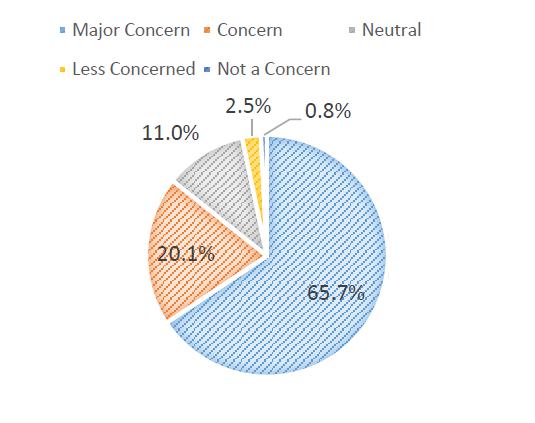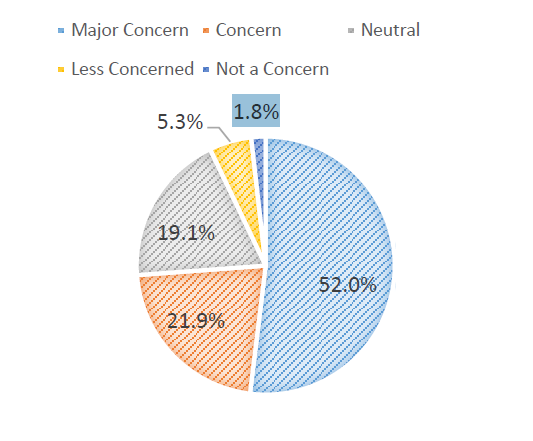Introduction
Mineral County, organized in 1911, is located in west-central Nevada. It encompasses 3,756 square miles and is recognized as one of Nevada’s 16 counties (and one independent city). Mineral County is known as a historical mining area and is home to one of the world’s largest United States Army Ammunition Depots. The largest unincorporated town is Hawthorne, followed by Schurz, Walker Lake, Mina and Luning. The community of Schurz is located on the Walker River Indian Reservation.
The Nevada State Demographer estimated in 2015 the population of Mineral County was 4,539. Mineral County’s population was 4,772, according to the 2010 U.S. Census. The U.S. Census Bureau reported 1,917 households (2010-2014) in Mineral County.
Mineral County communities are geographically isolated from large population centers and are economically depressed. The countywide population has decreased over the past several years. The economic base for employment has historically been mining and the Hawthorne Army Depot. Mining has ceased; current employers are the Hawthorne Army Depot, school district, county, other agencies and small local business. The per capita income for the past 12 months (in 2014 dollars) was $23,222 (U.S. Census Bureau, 2016).
The historical impacts of the Hawthorne Depot as a fully functioning Navy/Army base until 1980 led to the current diverse demographic population in Mineral County. The racial breakdown based on U.S. Census data of the county is: 70 percent Caucasian, 4.6 percent Black, 17 percent American Indian, 3.8 percent Asian, and 11.2 percent Hispanic (U.S. Census Bureau, 2016). Education levels of the population include: 86.3 percent of the population are high school graduates or higher, and 10.8 percent hold a bachelor’s degree or higher. 19.6 percent of the population is under 18 years old, and 25 percent of the population is over 65 years old (U.S. Census Bureau, 2014).
University of Nevada Cooperative Extension in Mineral County conducted a research study through a needs assessment process beginning in 2015 and ending in the spring of 2016. The quality of life needs assessment process that focused on community development was designed to help University of Nevada Cooperative Extension, county government and Tribal government identify community needs, issues and assets. Mineral County residents’ participation in the needs assessment was purely voluntary.
Need Assessment Methods
Focus groups sessions were held with the townships of Mina, Walker Lake and Hawthorne; and with sectors of the communities who represented junior high/high school youth, health care providers, county departments, parents in the Hawthorne school system and senior citizens. The purpose of the sessions was to identify indicators for the community development needs assessment survey questionnaire. Focus groups cannot provide reliable estimates as to what proportion of a population has a particular opinion. However, focus groups provide direction on what questions to ask in a survey questionnaire (Dillman, 1994).
These focus groups identified community assets, community development needs, youth issues and senior issues. Mineral County residents were asked to prioritize these identified needs in the survey questionnaire. Approval was given by the Walker River Indian Reservation tribal council to conduct the needs assessment with households on the reservation. The needs assessment survey questionnaire was made available in August 2015, and the last surveys were collected in February 2016. A mixed-mode data collection method was used due to Mineral County budget constraints. The use of both paper and online survey methods were combined in an effort to increase response rates and optimize community resources (Dillman, Smyth & Christian, 2014).
The Mineral County Independent newspaper published two articles announcing the needs assessment. Paper surveys were made available at different locations in the towns of Hawthorne and Schurz. Paper surveys, with postage-paid envelopes, were sent home to all parents in the Mineral County School District. An online survey was sent out through the employment Listservs of SOC-Day & Zimmerman Company (Army Depot), the Mineral County School District and Mineral County. The online survey was also posted on local Facebook pages. Mineral County Cooperative Extension hired survey administrators to go door-to-door in Luning, Mina and Walker Lake. Extension student workers also administered the surveys to residents during the morning, afternoon and evening at the local supermarket, Safeway. Outreach to the community of Schurz occurred through the Walker River Paiute Tribe tribal departments, local food banks and the housing authority.
Need Assessment Results
A total of 447 surveys were completed from the mixed-mode data collection method. Three hundred and sixty-seven participants completed paper face-to-face surveys, and 80 surveys were completed online through Survey Monkey. The response rate, based on the number of estimated households in Mineral County, was 23 percent. There were 1,000 paper surveys printed by Mineral County Cooperative Extension for a paper survey completion rate of 37 percent.
The survey identified community development priorities in Mineral County. These priorities were categorized under community assets, community development needs, youth issues and senior citizen issues. This fact sheet reports on Mineral County youth issues.
There were several indicators that were obtained through focus groups sessions discussing youth issues in Mineral County. The survey instrument provided the list of indicators for Mineral County residents to prioritize. Table 1 reports the priority rank of indicators for Mineral County.
The highest priority for youth issues was the use of drugs and alcohol by youth. This was followed by the quality of K-12 education and access to higher education. Graph 1 and Graph 2 show that 66 percent of respondents thought the use of drugs and alcohol was a major concern, and 52 percent thought driving under the influence was a major concern. The lowest priority was community support of families with children.
Table 1. Mineral County priorities for youth issues
| Priority |
Community Assets |
Mean |
| 1 |
Use of drugs and alcohol |
4.47 |
| 2 |
Quality of K- 12 education |
4.40 |
| 3 |
Local access to community college |
4.36 |
| 4 |
Local access to tech/vocational training |
4.32 |
| 5 |
Job skills training/preparation |
4.31 |
| 6 |
What do I do after high school |
4.28 |
| 7 |
Dropping out of school |
4.18 |
| 8 |
Local part-time jobs |
4.17 |
| 9 |
Driving under the influence |
4.17 |
| 10 |
After school and out of school programs |
4.14 |
| 11 |
Activities for junior high youth (7- 8 grade) |
4.14 |
| 12 |
Activities for elementary school youth (K-6 grade) |
4.14 |
| 13 |
Participating in crime and/or vandalism |
4.13 |
| 14 |
Activities for high school youth (9-12 grade) |
4.12 |
| 15 |
Parental support of children (food, clothing, etc) |
3.97 |
| 16 |
Harassment from peers (bullying, teasing) |
3.95 |
| 17 |
Family abuse |
3.89 |
| 18 |
Family’s ability to pay bills |
3.89 |
| 19 |
Community support of families with children |
3.88 |
Note: 1 = not a concern; 5 = major concern
Graph 1. Youth issues: Use of drugs and alcohol.

Data From Graph 1
Graph 2. Youth issues: Driving under the influence.

Data From Graph 2
Quality and Access to Education
Sixty-four percent of the respondents were concerned about the K-12 education system in Mineral County. In addition, there was concern that there was no access to higher education since Western Nevada College left the county. These concerns are also related to other expressed concerns including dropping out of high school, college readiness, what to do after high school, and job skills and preparation.
Discussion and Conclusions
The use of drugs and alcohol under youth issues has been a priority for youth and adults since the first community needs assessment conducted in Mineral County in 2003. Mineral County, the communities’ coalition and Mineral County Cooperative Extension are working together to build education and response programs to assist with substance abuse problems. A Drug Free Communities Grant was submitted in 2016, and while it was not funded, efforts are continuing.
Local churches have also come together to provide counseling and group sessions for individuals, families and youth dealing with substance abuse. Mineral County Cooperative Extension has also implemented the Michigan Model for Health Program for sixth- graders in Hawthorne Elementary School, providing a change from the Just Say No to Drugs Program offered since 2005.
Quality of and access to education will continue to be challenges due to the geographic location of the communities and funding levels. However, efforts are underway to help address these challenges. Western Nevada College has announced that they will implement their “Jump Start” Program. Agencies, the county, the school district and Cooperative Extension work closely together to provide programs. A boys and girls club opened its doors in 2016 and is successfully operating in 2017.
There has been speculation that the 1,917 households stated in the U.S. Census may not be a correct reflection of the community, since the population has steadily decreased since the 2010 U.S. Census. This would directly affect the response rate of the survey. Since U.S. Census data is the only data to compare to, it was also important that the completion rate of the paper survey be included. In addition, a completion rate for the online survey could not be calculated because it was sent over social media sites, and connections were not available.
A technical report of the entire Mineral County Community Development Needs Assessment can be obtained at the University Center for Economic Development (UCED 2016/17-05).
Bibliography
Salant, P., & Dillman, D. (1994). How to Conduct Your Own Survey. New York, NY: John Wiley & Sons, Inc.
Dillman, D. A., Smyth, J. D., & Christian, L. M. (2014). Internet, Phone, Mail, and Mixed-Mode Surveys: The Tailored Design Method. Hoboken, NJ: John Wiley & Sons, Inc.
US Census Bureau. (2017) QuickFacts: Mineral County, Nevada. Retrieved on August 2, 2017. Retrieved from Census.
Graph 1. Youth issues: Use of drugs and alcohol
| Type of Concern |
Percentage |
| Major Concern |
65.7% |
| Concern |
20.1% |
| Neutral |
11.0% |
| Less Concerned |
2.5% |
| Not a Concern |
0.8% |
Graph 2. Youth issues: Driving under the influence
| Type of Concern |
Percentage |
| Major Concern |
52.0% |
| Concern |
21.9% |
| Neutral |
19.1% |
| Less Concerned |
5.3% |
| Not a Concern |
1.8% |
Emm, S., and Hagen, S., Berginnis, C.
2017,
Mineral County Youth Issues,
Extension, University of Nevada, Reno, Fact Sheet 17-18


